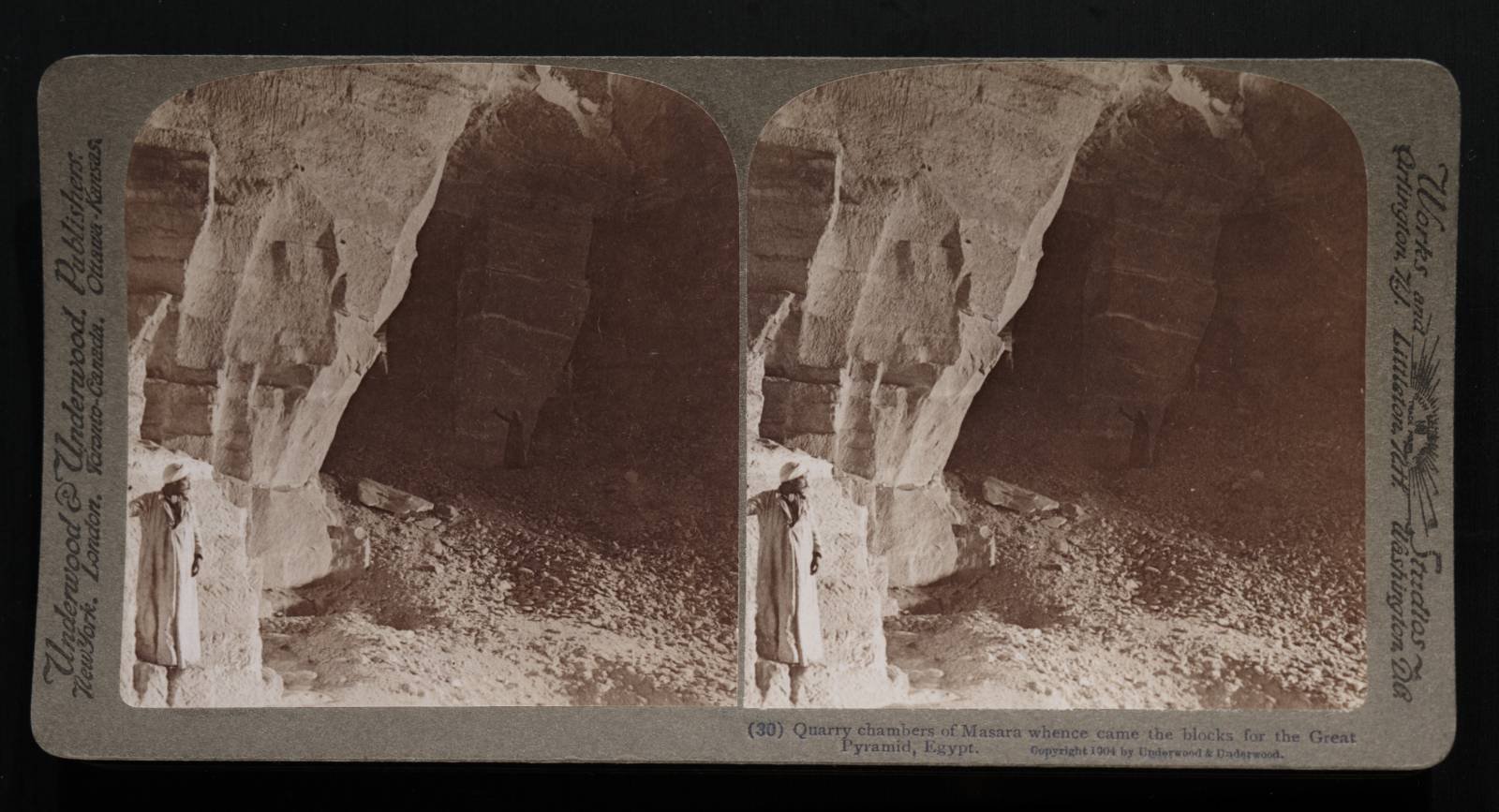Egypt Through The Stereoscope
A Journey Through The Land Of The Pharaohs
by James Henry Breasted | 1908 | 103,705 words
Examines how stereographs were used as a means of virtual travel. Focuses on James Henry Breasted's "Egypt through the Stereoscope" (1905, 1908). Provides context for resources in the Travelers in the Middle East Archive (TIMEA). Part 3 of a 4 part course called "History through the Stereoscope."...
Position 30 - Quarry Chambers Of Masara Whence Came The Blocks For The Great Pyramid
 Do you remember those 2,300,000 two and a half ton blocks in the Great Pyramid? This is where most of them were taken out. The chambers before us belong to the great quarry of Masara; there are others in the vicinity, especially that of Turra, this last having also doubtless furnished limestone for the great pyramid. You will remember that as we stood on the summit of the pyramid, we looked eastward and I called your attention to the location of the quarries (page 120).
Do you remember those 2,300,000 two and a half ton blocks in the Great Pyramid? This is where most of them were taken out. The chambers before us belong to the great quarry of Masara; there are others in the vicinity, especially that of Turra, this last having also doubtless furnished limestone for the great pyramid. You will remember that as we stood on the summit of the pyramid, we looked eastward and I called your attention to the location of the quarries (page 120).
We noted the broad plain of the valley, across which the stone was transported. As we stand here and look out you see the glimmer of light from the opening, far behind that huge central pillar which supports the roof. Now imagine the long lines of swarthy workmen tugging at the ropes as they draw out the massive blocks, the volleying click of innumerable chisels as the blocks are hewn from the mountain, and the hoarse shouts of thousands of slaves, mingled with the sharp call of the task-master and overseers when there is any sign of lagging.
All this these walls have looked upon as the vast galleries were pierced deeper and deeper into the mountainous cliff. What tales of misery they could tell—of foreign captives lashed to their tasks by the thousand, driven into these galleries fresh from their Syrian homes, where the Pharaoh found them on his last victorious campaign. And now they are forced to furnish the stone to build the temple which shall commemorate the Pharaoh's victory and their own captivity, for upon its walls in triumphant reliefs and swelling songs of praise to the Pharaoh's prowess, the story of his conquest shall be recorded, with long lists of the towns from which the wretched captives were gathered in like cattle.
Such records we shall see when we have reached Thebes. It is in these places that the Pharaohs spent much of the wealth gained in Syrian conquests in order to appease the gods, who gave them victories, with larger and more splendid temples. These we shall visit in the cities of the upper river. There we shall observe how the great builders, whose names are all about us here, carved on the walls of these vast galleries, employed the materials which captive labor furnished them.
From these quarries seven or eight miles south of Cairo we shall now move to the site of ancient Heliopolis, some six miles on the other side, or, to speak more exactly, on the northeast side. Our position is given by the red lines numbered 31 in the upper portion of Map 4.
